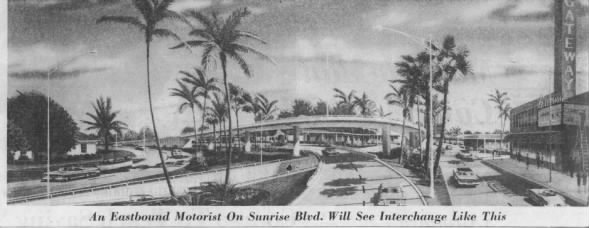By Jane Feehan
------
Tags: Fort Lauderdale history, Fort Lauderdale clubs, Fort Lauderdale restaurants of the 1960s, Fort Lauderdale entertainers, history of Fort Lauderdale
Muriel’s Exotic Jade House was quite the nightspot in its day.
Sitting off A-1-A in Lauderdale-by-the-Sea, the Jade House featured tunes of
the Gay 90s—that’s 1890s—and a one-item menu of prime rib. But people frequented the club to see Muriel Window Turnley
in her feathered hats playing piano and singing under a large umbrella adorned
in Christmas bells and lights.
| Muriel |
Quite the character, Muriel hailed from Burlingame, Kansas,
where she had her start in vaudeville with a stage appearance at three months. In 1910, she officially joined vaudeville theater in signing with the
American Music Hall in New York. Three years later, she became a Ziegfeld girl,
featured by Flo Ziegfeld in a single act in his Follies review as the Peacock
Girl. Muriel also performed in the Orpheum and Keith circuits in those days. She
performed with Will Rogers, Al Jolson, Sophie Tucker, Jimmy Dorsey and other high-profile
entertainers of the era. Muriel also flirted with opera singing, she told
friends, as a protégé of opera great Maria (she probably meant Luisa) Tetrazzini.
Muriel played in London—Drury Lane and the Victoria Palace—where
she claimed to have introduced the song “Till we meet again.” She later told friends she became an ambulance
driver in London, one of the first women to do so in World War I, transporting wounded
soldiers returning from France in a “touring car borrowed from Herbert Hoover.”
This can’t be confirmed, nor can her claim the Muriel Cigar was named for her.
What can be certain is Muriel opened her Exotic Jade House in 1953
where she was seen with her giant Macaw, Sophie. Known for her generosity and
as a soft touch for those in trouble, she invited fans
over 60 to be her guest for dinner at her 65th birthday in 1956. In 1958, she joined a highly-publicized neighborhood fight to quell the noisy underage drinking parties on Jade Beach, across the street from her club. Jade Beach partying was later depicted in the 1961 movie, "Where the Boys Are."
over 60 to be her guest for dinner at her 65th birthday in 1956. In 1958, she joined a highly-publicized neighborhood fight to quell the noisy underage drinking parties on Jade Beach, across the street from her club. Jade Beach partying was later depicted in the 1961 movie, "Where the Boys Are."
She made one album and after years of wishing for a national
network television spot, appeared on the Michael Douglas Show a few months
before her death. The popular entertainer died Aug. 29, 1965 in Fort Lauderdale’s
Holy Cross Hospital after an appendectomy, or ruptured appendix, depending on the
account. Muriel Inetta Turnley, married three times (Robert Emmet Keene, Arthur
Hanford and Howard Turnley) is entombed at the Lauderdale Memorial Gardens Mausoleum,
where her mother Catherine I. Window* lies.
And the Jade House? After closing and reopening a number of
times, it finally shuttered as Mitchie’s Steak House in 1970 to make way for a townhouse
development. Muriel's was a tough act to follow. Copyright Jane Feehan 2018.
*Catherine I. Window joined daughter Muriel in Pompano in
1954 or 55, where she died in 1961 at age 90.
Sources:
Fort Lauderdale
News, Dec. 13, 1953
Fort Lauderdale
News, Jan.6, 1954
Fort Lauderdale
News, Feb. 5, 1956
Fort Lauderdale
News, April 11, 1958
Fort Lauderdale
News, March 2, 1961
Fort Lauderdale
News, Aug 30, 1965
Fort Lauderdale
News, Oct. 31, 1965
Fort Lauderdale News, Nov. 23, 1966
Fort Lauderdale
News, Oct. 25, 1968
Fort
Lauderdale News,
Sept 5, 1970Tags: Fort Lauderdale history, Fort Lauderdale clubs, Fort Lauderdale restaurants of the 1960s, Fort Lauderdale entertainers, history of Fort Lauderdale




























